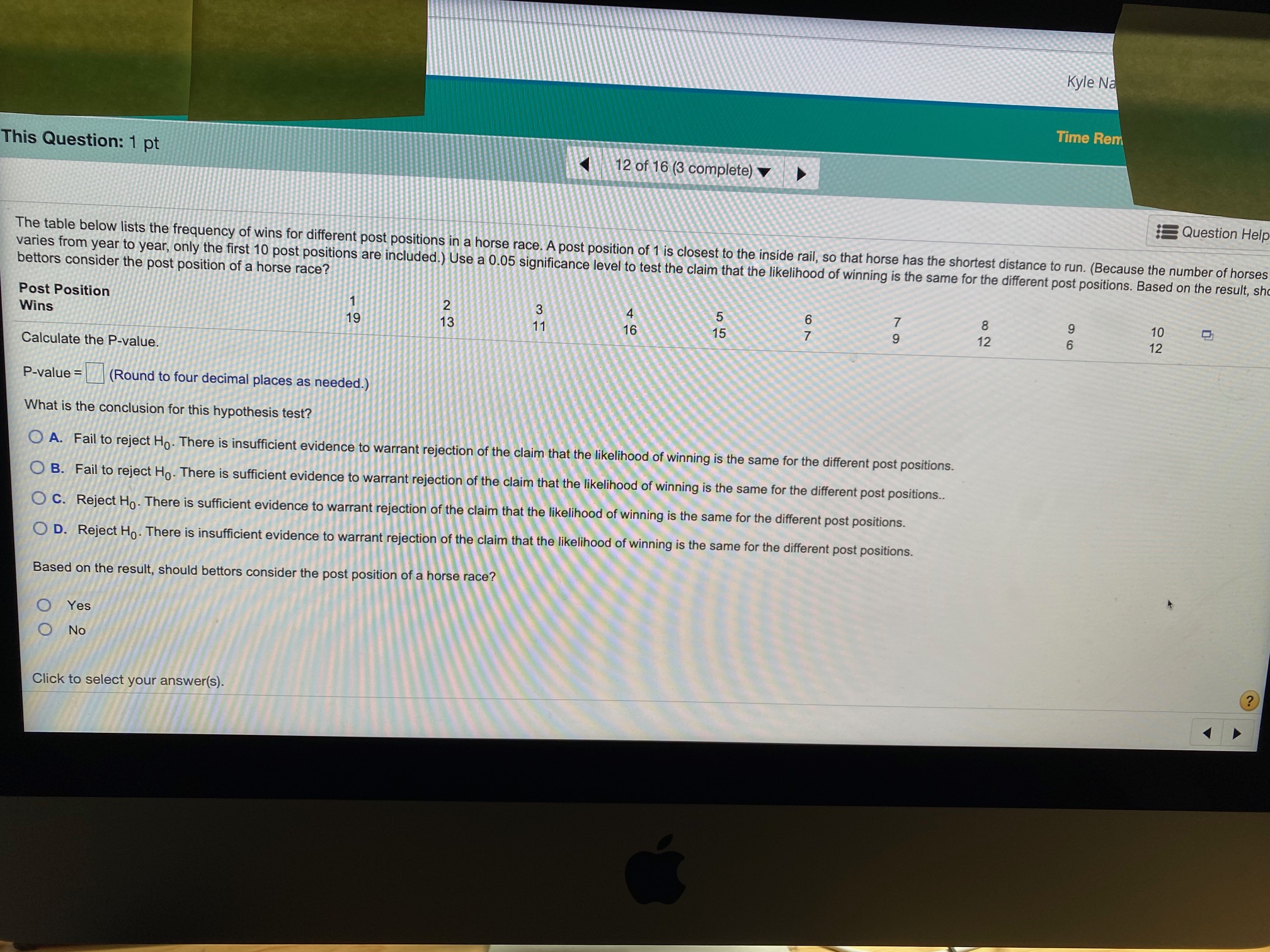The table below lists the frequency of wins for different post positions in a horse race. A post position of 1 is closest to the inside?rail, so that horse has the shortest distance to run.?(Because the number of horses varies from year to?year, only the first 10 post positions are?included.) Use a 0.05 significance level to test the claim that the likelihood of winning is the same for the different post positions. Based on the?result, should bettors consider the post position of a horse?race?
Kyle Na Time Ren This Question: 1 pt 12 of 16 (3 complete) Question Help The table below lists the frequency of wins for different post positions in a horse race. A post position of 1 is closest to the inside rail, so that horse has the shortest distance to run. (Because the number of horses varies from year to year, only the first 10 post positions are included.) Use a 0.05 significance level to test the claim that the likelihood of winning is the same for the different post positions. Based on the result, should bettors consider the post position of a horse race? Post Position 10 Na Wins 19 16 15 12 Determine the null and alternative hypotheses. Ho: Hy : Calculate the test statistic, x x2 = (Round to three decimal places as needed.) Calculate the P-value. P-value = (Round to four decimal places as needed.) What is the conclusion for this hypothesis test? A. Fail to reject Ho. There is insufficient evidence to warrant rejection of the claim that the likelihood of winning is the same for the different post positions. O B. Fail to reject Ho. There is sufficient evidence to warrant rejection of the claim that the likelihood of winning is the same for the different post positions.. Click to select your answer(s). ? D STEKyle Na Time Rem This Question: 1 pt 12 of 16 (3 complete) Question Help The table below lists the frequency of wins for different post positions in a horse race. A post position of 1 is closest to the inside rail, so that horse has the shortest distance to run. (Because the number of horses varies from year to year, only the first 10 post positions are included.) Use a 0.05 significance level to test the claim that the likelihood of winning is the same for the different post positions. Based on the result, sh bettors consider the post position of a horse race? Post Position 10 Wins 19 12 12 Calculate the P-value P-value = (Round to four decimal places as needed.) What is the conclusion for this hypothesis test? O A. Fail to reject Ho. There is insufficient evidence to warrant rejection of the claim that the likelihood of winning is the same for the different post positions. O B. Fail to reject Ho. There is sufficient evidence to warrant rejection of the claim that the likelihood of winning is the same for the different post positions.. O C. Reject Ho- There is sufficient evidence to warrant rejection of the claim that the likelihood of winning is the same for the different post positions. O D. Reject Ho. There is insufficient evidence to warrant rejection of the claim that the likelihood of winning is the same for the different post positions. Based on the result, should bettors consider the post position of a horse race? O Yes No ? Click to select your answer(s)








